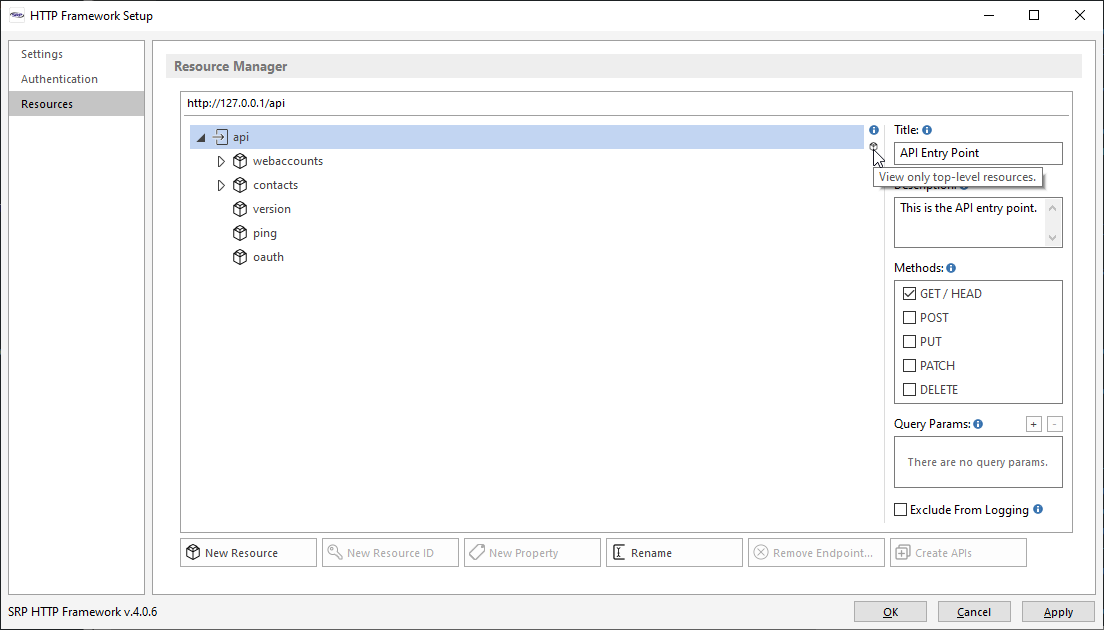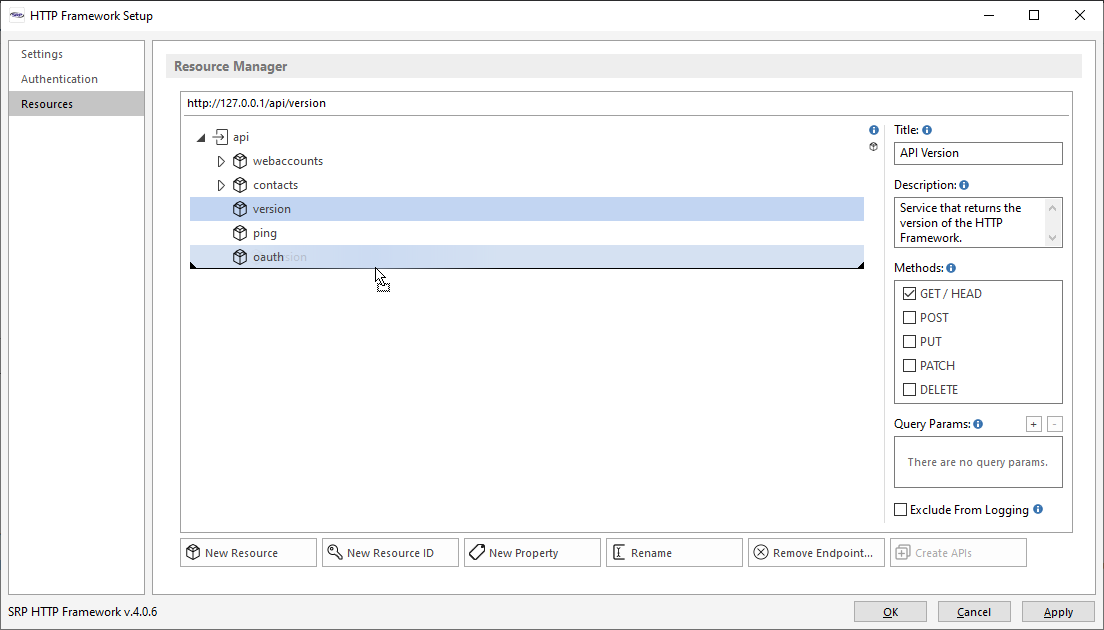Page History
...
- Resource Collapse. The hierarchical resource view can tend to get very busy when multiple resources are open. There are times when we just want to collapse everything to avoid excessive scrolling up and down. A new (fairly inconspicuous) button has been added to do just that:
- Resource Sorting. When new resources are added, they always land at the bottom. However, there are times when we simply want to view our resources in a different order than when their creation date. Now this can be accomplished with a simple drag-and-drop action (shame on us for not adding this sooner)!
Support for another HTTP Method: HEAD
HEAD is one of the first methods introduced in the HTTP spec, but it is probably one of the lesser known members. According to the specification, HEAD works exactly like GET but it does not return a body. So, why would anyone use it? First, it is a way to "test the waters" of a GET request without the overhead that this request might produce. Second, HEAD requests are supposed to return the same HTTP Response headers that a GET request, making it easier to anticipate how the body will be returned (e.g., the Content-Type header should still have a valid value, even if the body is empty). Finally, since the HEAD method requires authentication, it is a great way to "log into" an application without requiring the app to download and endpoint's resource right away.
...
| Code Block | ||
|---|---|---|
| ||
////////////////////////////////////////////////////////////////////////////////////////////////////////////////////////
// Endpoint Handlers
////////////////////////////////////////////////////////////////////////////////////////////////////////////////////////
API contacts.HEAD
API contacts.GET
Method = HTTP_Services('GetHTTPRequestMethod')
// If the GET method then return a body. If the HEAD method then just return response headers.
.
.
.
.
end api |
URL Templates and HAL
URI Templates (URL Templates going forward) were introduced in 2012 as a way of documenting the structure of a URL (including any query params). One primary purpose for URL Templates is for "the discovery of available services". This fits very well with the REST constraint of "resource identification". Simply put, a URL Template is an abstraction (or generic version) of a resource URL. A templated version of a URL contains arguments surrounded by curly braces like so:
...

